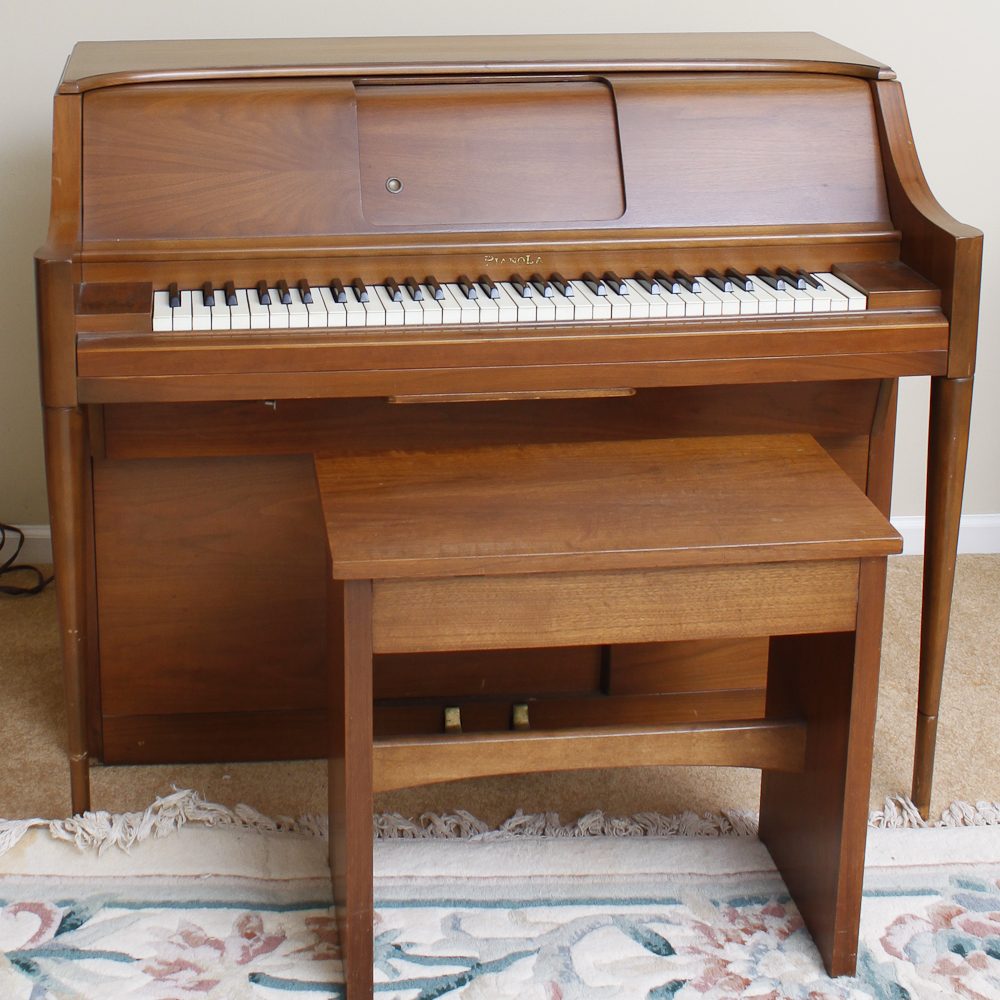

Like most other piano players, the Pianola worked by suction, created by foot pedals, and it played 65 notes of the piano, losing about an The Original Pianola - Aeolian Company Catalogue, New York, 1898. The first commercial use of the Pianola trademark occurred onġ5 January 1898, and by the autumn of that year production in Detroit had started in earnest, with instruments being sold by the Aeolian Company in New York and elsewhere in the USA.
#Aeolian player piano trial
Very first Pianola was built in early 1895 by Edwin Votey, in a workshop at his home inĭetroit, and his Farrand & Votey Organ Company made several trial models during 18. Whatever the claims to priority of invention may have been, it was certainly the Pianola which outshone all the rest, as the first truly musical piano player. The Angelus was patented in 1895, it was not produced as a piano player until February 1897, by which time the Pianola was also being manufactured on aĪngelus Advertisement - London, England, November 1903. White in producing the Angelus mechanism. Parker, ended up at WilcoxĪnd White when Munroe went out of business, and in the early 1890s co-operated with Edward H. Manufactured many of the organs and organettes sold by the Mechanical Orguinette Company. McTammany worked in the 1880s for the Munroe Organ Company of Worcester, Mass, which John McTammany's influence on the piano player came at second hand. Merritt Gally's Autophone Attachment - New York, 1879. Piano, although the accompanying text refers mostly to reed organs. It is drawn as though placed in front of a seven octave A very early pneumatic player attachment was designedīy Merritt Gally of New York, and illustrated in Scientific American in June 1879. Nevertheless, it is clear that a number of inventors made their own contributions, from the 1870s onwards. It is quite difficult to pinpoint the early history of the piano player, because it was not well documented until it became commercially Pianos, but the Aeolian Company had also constructed them to special order during the 1890s. Wilcox and White, manufacturers of the Angelus, trumpeted loudly that they had been the first to produce player The floor! Not surprisingly, this design was not commercially successful, and it was the push-up piano players which laid the foundation of the player

You would have to be a real enthusiast for piano rolls to purchase a grand piano with a roll half out of sight under the keyboard, and casework down to Many musically inclined people already had their own pianos, and did not particularly want to buyĪnother complete upright or grand simply in order to obtain the unproven roll-playing facility, especially since these very early instruments were not generallyĪn early Angelus-Mathuschek Player Grand Piano - Meriden, Connecticut, 1895.

With roll mechanisms, but they were rather unsuccessful. The reasons for this are not technical, but simply the vagaries of business in the USA in the mid-1890s one or two manufacturers tried to market pianos On the whole, piano players pre-date player pianos, the latter being the special pianos with all the roll mechanismsīuilt in. The use of felt avoids harming the keys of the piano, as it is even Small fingers, made from some combination of wood, metal and felt. The piano players that we have in mind are devices which sit in front of normal pianos, and play them with a set of One might be forgiven for thinking that a piano player is simply someone who plays the piano! This is quite true, of course, but on this website A Pianola Recital - Aeolian Company Catalogue, Paris, France, c.1908.


 0 kommentar(er)
0 kommentar(er)
